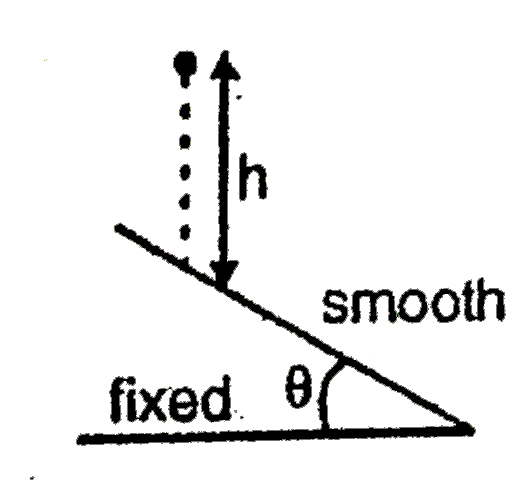A billiard ball strikes perpendicularly on one side of a smooth billiard table and after rebounding it strikes the opposite side. As there is no friction the motion continues. Thus the ball makes a to and fro oscillation with repeated rebounds. Is the motion of the billiard ball simple harmonic?
In this case, if the collision of the billiard ball with the edge of the table is elastic, then the motion of the billiard ball is periodic. But all periodic motions are not simple harmonic. If in a periodic motion, acceleration of the particle is proportional to its displacement from the position of equilibrium and is directed towards it, then that periodic motion of the particle is called simple harmonic. The billiard ball oscillates to and fro with repeated rebounds, but it does not fulfill the above conditions of SHM. The table is smooth. So the ball has no acceleration on its path of motion except at the time of collision with the two edges of the table. Hence, the motion is not simple harmonic.
Topper's Solved these Questions
- BOOK - CHHAYA PUBLICATIONCHAPTER - SIMPLE HARMONIC MOTIONEXERCISE - EXERCISE33videos
SIMPLE HARMONIC MOTION
- BOOK - CHHAYA PUBLICATIONCHAPTER - SIMPLE HARMONIC MOTIONEXERCISE - VERY SHORT ANSWER TYPE QUESTIONS23videos
SIMPLE HARMONIC MOTION
- BOOK - CHHAYA PUBLICATIONCHAPTER - SIMPLE HARMONIC MOTIONEXERCISE - SECTION RELATED QUESTIONS8videos
SIMPLE HARMONIC MOTION
- BOOK - CHHAYA PUBLICATIONCHAPTER - ROTATION OF RIGID BODIES EXERCISE - CBSE SCANNER10videos
ROTATION OF RIGID BODIES
- BOOK - CHHAYA PUBLICATIONCHAPTER - STATICSEXERCISE - CBSE SCANNER3videos
STATICS
Similar Questions
Two billiard balls of same size and mass are in contact on a billiard table. A third ball of same mass and size strikes them symmetrically and remains at rest after the impact. Find the coefficient of restitution between the balls?
View SolutionTwo billiard balls of same size and mass are in contact on a billiard table. A third ball of same mass and size strikes them symmetrically and remains at rest after the impact. Find the coefficient of restitution between the balls?
View Solution
Knowledge Check
- Question 1 - Select One or More
A ball strikes a smooth horizontal floor obliquely and rebounds inelastically.
AThe kinetic energy of the ball just after hitting the floor is equal to the potential energy of the ball at its maximum height alter rebound.BTotal energy of the ball is not conserved.CThe angle of rebound with the vertical is greater than the angle of incidence.DNone of the above. - Question 2 - Select One
A ball of mass m strikes the fixed inclined plane after falling through a height h. if it rebounds elastically. The impulse on the ball is :
 A2mcosθ√2ghB2mcosθ√ghC2m√2ghcosθD2m√2gh
A2mcosθ√2ghB2mcosθ√ghC2m√2ghcosθD2m√2gh
Two billiard balls of same size and mass are in contact on a billiard table. A third ball of same mass and size strikes them symmetrically and remains at rest after the impact. Find the coefficient of restitution between the balls?
View SolutionA ball strikes a smooth horizontal floor obliquely and rebounds inelastically.
View SolutionA billiard ball collides elastically with an identical stationary ball. The collision is not head on. Show that the directions of motion of the two balls are at right angles after the collision. Solve the problem in centre of mass frame as well as in lab frame.
View SolutionTwo billiard balls of same size and mass are in contact on a billiard table. A third ball of same mass and size strikes them symmetrically and remains at rest after the impact. Find the coefficient of restitution between the balls?
View SolutionTwo billiard balls each of mass 50g moving in opposite directions with a speed of 36km/h colide and rebound with the same velocity What is the impulse imparted to each ball due to other ?
View SolutionA ball of mass m strikes the fixed inclined plane after falling through a height h. if it rebounds elastically. The impulse on the ball is :
 View Solution
View Solution

